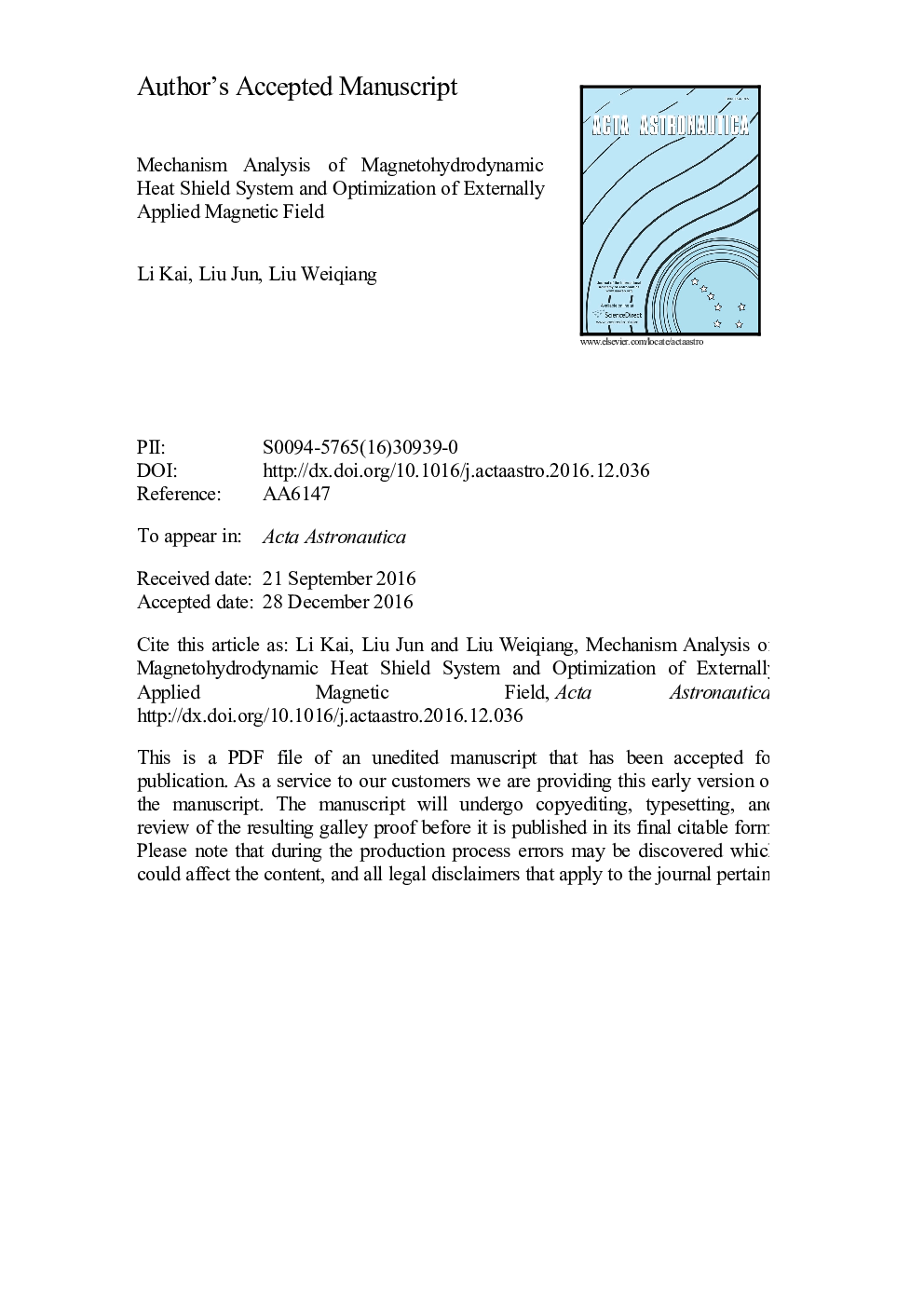| Article ID | Journal | Published Year | Pages | File Type |
|---|---|---|---|---|
| 5472471 | Acta Astronautica | 2017 | 18 Pages |
Abstract
As a novel thermal protection technique for hypersonic vehicles, Magnetohydrodynamic (MHD) heat shield system has been proved to be of great intrinsic value in the hypersonic field. In order to analyze the thermal protection mechanisms of such a system, a physical model is constructed for analyzing the effect of the Lorentz force components in the counter and normal directions. With a series of numerical simulations, the dominating Lorentz force components are analyzed for the MHD heat flux mitigation in different regions of a typical reentry vehicle. Then, a novel magnetic field with variable included angle between magnetic induction line and streamline is designed, which significantly improves the performance of MHD thermal protection in the stagnation and shoulder areas. After that, the relationships between MHD shock control and MHD thermal protection are investigated, based on which the magnetic field above is secondarily optimized obtaining better performances of both shock control and thermal protection. Results show that the MHD thermal protection is mainly determined by the Lorentz force's effect on the boundary layer. From the stagnation to the shoulder region, the flow deceleration effect of the counter-flow component is weakened while the flow deflection effect of the normal component is enhanced. Moreover, there is no obviously positive correlation between the MHD shock control and thermal protection. But once a good Lorentz force's effect on the boundary layer is guaranteed, the thermal protection performance can be further improved with an enlarged shock stand-off distance by strengthening the counter-flow Lorentz force right after shock.
Related Topics
Physical Sciences and Engineering
Engineering
Aerospace Engineering
Authors
Kai Li, Jun Liu, Weiqiang Liu,
